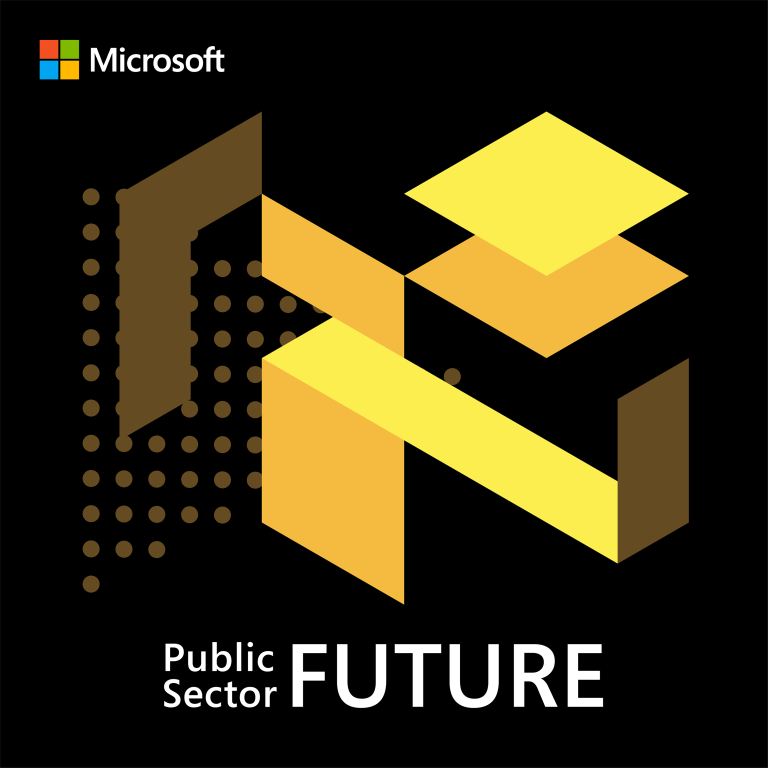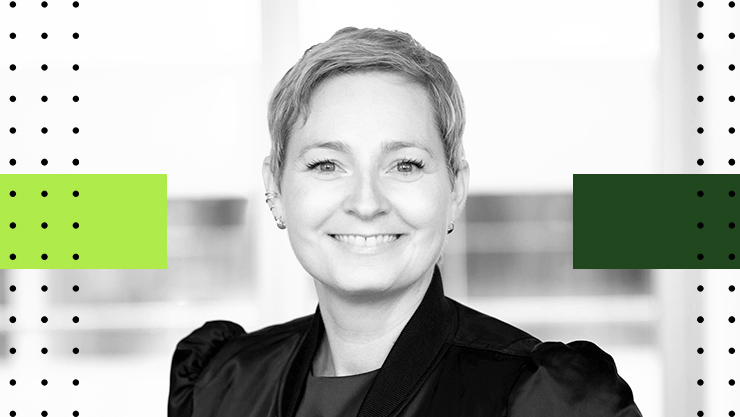
Taking defense and intelligence to the cloud edge
with Mike SchrockMike Schrock is the Vice President of Global Alliances at Thales, leading work on technology initiatives involving the intersection between cloud technology, data security, public trust, digital payments, and society.

This is a show for anyone who cares about using digital approaches in the public sector to deliver better outcomes. We explore stories from around the world, where public servants have been successful at driving change. We meet the people behind the stories, to hear their first-hand experiences and lessons learned. Throughout the series we discuss technology and trends, as well as the cultural aspects of making change happen.
In this episode we speak with Mike Schrock, Vice President of Global Alliances at Thales, Microsoft’s Defense & Intelligence Partner of the Year. Thales was recognized for their work developing cloud-based capabilities for defense organizations, allowing increased agility and interoperability, and bringing the ability to analyze data for decision making in a wide range of locations.
Click here for transcript of this episode.
Thales Australia & Microsoft Press Release
Mike Schrock [guest] | LinkedIn | Twitter
Olivia Neal [host] | LinkedIn | Twitter
Microsoft Public Sector Center of Expertise
Discover and follow other Microsoft podcasts at aka.ms/microsoft/podcasts

Episode summary
In this episode we speak with Mike Schrock, Vice President of Global Alliances at Thales, Microsoft’s Defense & Intelligence Partner of the Year. Thales was recognized for their work developing cloud-based capabilities for defense organizations, allowing increased agility and interoperability, and bringing the ability to analyze data for decision making in a wide range of locations.
Listen to this episode on any of these podcast platforms:
Microsoft’s Defense & Intelligence Partner of the Year – Thales
This podcast is the second of three special episodes where we explore the work of some of the people and teams instrumental in helping Public Sector organizations deliver.
In this episode we dive into the work of the Microsoft’s Defense & Intelligence Partner of the Year, Thales, who was recognized for their work developing cloud-based capabilities for defense organizations, allowing increased agility and interoperability.
An introduction to Thales
Thales is a global organization of about 80,000 people. Thales works primarily in government and public sector industries, but also has commercial ties.
“We’re in a unique spot to see both what the commercial side of the markets are doing and what the government and defense & intelligence departments are doing around data protection and around data and identity, and identity protection,” Mike Schrock, Vice President for Global Alliances said.
Thales is made up of entities across space systems, defense systems, transportation systems, avionics systems, and cybersecurity systems.
“We help lots of governments around the world with their critical infrastructure but typically around, public projects, high-security projects in the world,” Schrock explained.
Taking Nexium Defense Cloud to the edge
“We came up with this concept called Nexium Defense Cloud Edge, which was the idea to bring the Azure Stack with our traditional Nexium Defense Cloud system all the way out to that tactical edge – so operations of headquarters, the operations of all the different military ranks and systems could essentially tap into the analytics and the power that the Microsoft Cloud brings and make better decisions,” Schrock explained.
This solution gives the people who are remotely located and operating outside of headquarters, whether that be on the battlefield or in a humanitarian situation, the ability to access data and analytics and make better-informed decisions more quickly to facilitate their operations.
Core elements of the solution
There are three core system elements that the team focused on bringing to the solution:
Agility – The ability to deploy rapidly at the headquarters, at the forward operating theater and base, across legacy systems, out to the edge cloud and out to the far edge, disconnected cloud.
“The information from the edge has to be collaborated with the information from the core so that you can get real-time intelligence all the way out to the edge to make a decision. Likewise, information from the edge has to be brought back into the core to be analyzed and to be associated with other data sets and other legacy systems and other nation-states that are delivering or possibly part of the operation or the mission that the defense team is going after,” Schrock explained.
Interoperability – The ability to work in a multinational capacity, to integrate with legacy systems, and be interoperable at all these different areas.
“Interoperating with a NATO-based country and a NATO-based alliance, also operating with the Five Eyes – the security partnership between the United States, Canada, United Kingdom, Australia, and New Zealand. Those were really important capabilities from an interoperability standpoint,” Schrock shared.
“But we also had to be interoperable with modern data and modern application practices, right? And that’s what the Azure Stack helped bring us – the ability to build applications quickly, the ability to integrate data quickly,” Shrock said.
Decisiveness – The ability to use the information to make at-the-edge tactical decisions.
The combination of being able to operate on any traditional government or public cloud combined with this core cloud, where analytics can be running out on the far edge before that data is uploaded into the cloud, is powerful and optimizes mission effectiveness.
Other applications of the Nexium Defense Cloud Edge in the public sector
This solution is applicable in humanitarian cases or other projects where a first responder is operating in a remote environment.
“A lot of times when you go into disaster areas you have issues with connectivity, you have issues with reestablishing communication networks. That’s one of the things where Thales brings a big difference, being very integrated into LTE and mobile technology,” Schrock shared.
“Being able to interoperate between the shifting network conditions of uptime/downtime, availability/unavailability, and to bring the power of joint operations together works really well with this solution,” Schrock continued.
Customers from all elements of the public sector, whether it’s civilian services, military defense, or intelligence services need to be more responsive and agile to the changing world.
From public security to cybersecurity threats, “we have a whole host of threat vectors that are coming at systems and communications, and they need to be responded to in an organized fashion,” Shrock advised.
“The Nexium Defense Cloud represents a great model of how you can take one of the most extreme, highly secure operating theaters and environments and missions and how a uniform platform approach that has agility and the ability to expand into various networks or theaters of operation, but also to interoperate with legacy systems and legacy communication networks,” Shrock said.
How to measure success
Efficiencies and return on investment have been seen rapidly in a few areas:
“They’ve seen efficiencies in training staff, the ability to deploy it on a common, unified platform provides them a lot of value both in setting up systems,” Schrock shared.
Time has been saved – what used to take weeks now takes hours and what used to take weeks now only takes days to develop.
To find out more:
Read the press release from Thales Australia & Microsoft
Microsoft’s 2021 Partner of the Year Winners – Thales in Defense & Intelligence
Follow Mike Schrock on Twitter
About the Center of Expertise
Microsoft’s Public Sector Center of Expertise brings together thought leadership and research relating to digital transformation in the public sector. The Center of Expertise highlights the efforts and success stories of public servants around the globe, while fostering a community of decision makers with a variety of resources from podcasts and webinars to white papers and new research. Join us as we discover and share the learnings and achievements of public sector communities.
Questions or suggestions?











